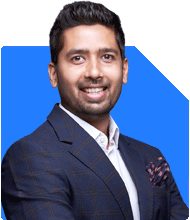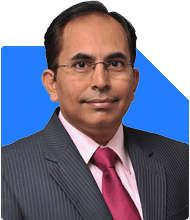Omkeshwar Singh | Answer |Ask -Follow
Head, Rank MF - Answered on Jan 30, 2020

I am investing in following MF funds. Please confirm whether I should continue: - ICICI Prudential Blue-chip Fund - Direct Plan
- Aditya Birla Sun Life Equity Advantage Fund - Growth-Regular Plan
- Aditya Birla Sun Life Small Cap Fund Growth-Direct Plan
Also suggest best option funds in large cap fund.
| Name of the Fund | Category | RankMF Star Rating |
| Ameet Naik | ||
| ICICI Prudential Blue-chip Fund - Direct Plan | Equity - Large Cap Fund | 3 |
| Aditya Birla Sun Life Equity Advantage Fund - Growth-Regular Plan | Equity - Large & Mid Cap Fund | 4 |
| Aditya Birla Sun Life Small Cap Fund Growth-Direct Plan | Equity - Small cap Fund | 2 |
Equity - Large Cap Fund:
- LIC MF Large Cap Fund-Growth
- Axis Bluechip Fund-growth
Equity - Small cap Fund:
- Kotak Small Cap Fund – Growth
- Axis Small Cap Fund – Growth
You may like to see similar questions and answers below
Omkeshwar Singh | Answer |Ask -Follow
Head, Rank MF - Answered on Jan 30, 2020
Kirtan A Shah | Answer |Ask -Follow
MF Expert, Financial Planner - Answered on Sep 27, 2023
Ramalingam Kalirajan |10908 Answers |Ask -Follow
Mutual Funds, Financial Planning Expert - Answered on Mar 06, 2025
Janak Patel |72 Answers |Ask -Follow
MF, PF Expert - Answered on Mar 06, 2025
Ramalingam Kalirajan |10908 Answers |Ask -Follow
Mutual Funds, Financial Planning Expert - Answered on Apr 03, 2025
Ramalingam Kalirajan |10908 Answers |Ask -Follow
Mutual Funds, Financial Planning Expert - Answered on Dec 20, 2025
Ramalingam Kalirajan |10908 Answers |Ask -Follow
Mutual Funds, Financial Planning Expert - Answered on Dec 20, 2025
Naveenn Kummar |237 Answers |Ask -Follow
Financial Planner, MF, Insurance Expert - Answered on Dec 20, 2025
Ramalingam Kalirajan |10908 Answers |Ask -Follow
Mutual Funds, Financial Planning Expert - Answered on Dec 19, 2025
Nayagam P P |10859 Answers |Ask -Follow
Career Counsellor - Answered on Dec 19, 2025
Ramalingam Kalirajan |10908 Answers |Ask -Follow
Mutual Funds, Financial Planning Expert - Answered on Dec 19, 2025
Ramalingam Kalirajan |10908 Answers |Ask -Follow
Mutual Funds, Financial Planning Expert - Answered on Dec 19, 2025
Ramalingam Kalirajan |10908 Answers |Ask -Follow
Mutual Funds, Financial Planning Expert - Answered on Dec 19, 2025
Radheshyam Zanwar |6751 Answers |Ask -Follow
MHT-CET, IIT-JEE, NEET-UG Expert - Answered on Dec 19, 2025
Radheshyam Zanwar |6751 Answers |Ask -Follow
MHT-CET, IIT-JEE, NEET-UG Expert - Answered on Dec 19, 2025


























